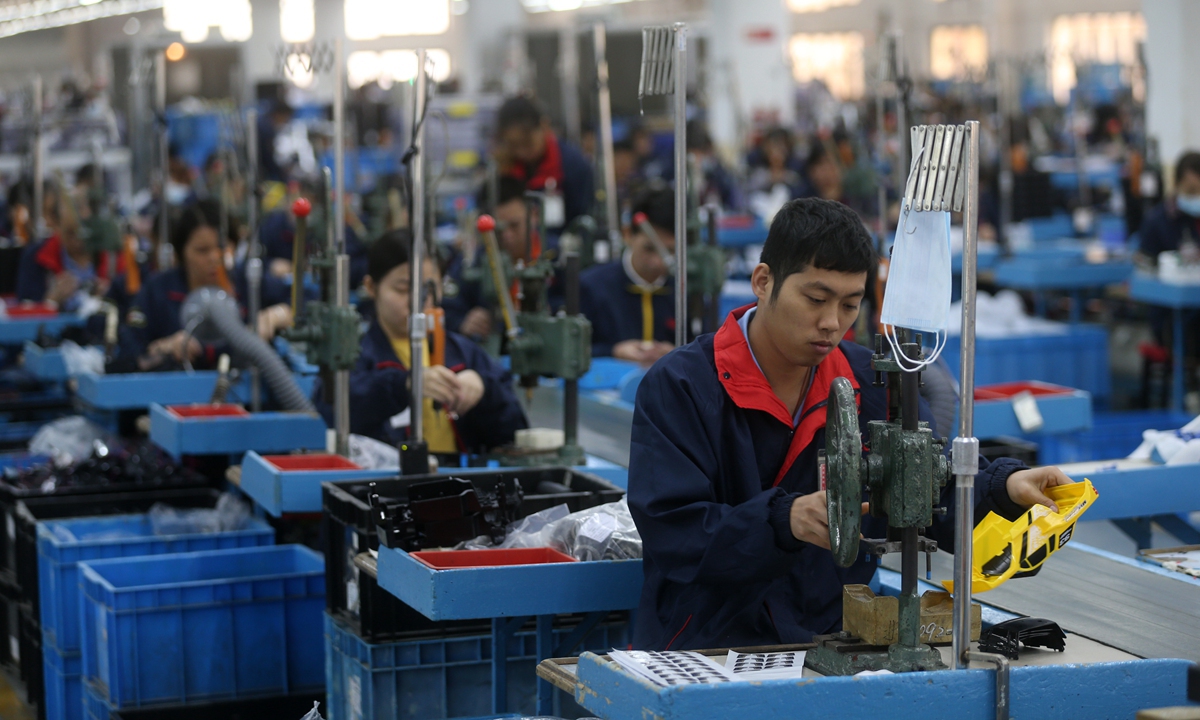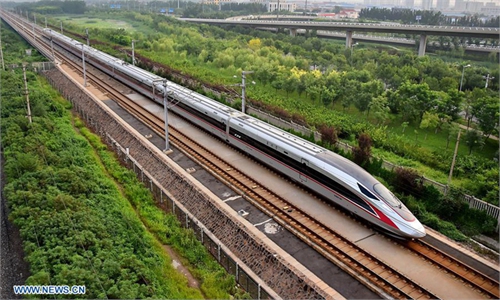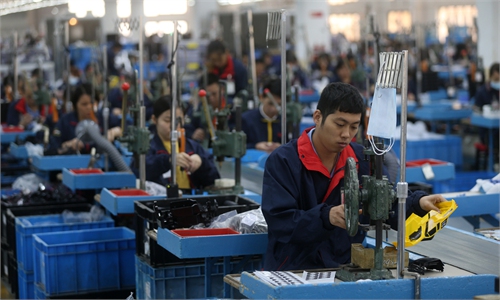
Employees of Masito work on production line in the company workshop in Dongguan, South China's Guangdong Province. Photos: Cui Meng/GT
While Washington's desire to strengthen its supply chains may seem reasonable, it appears to have gone too far, with its vigilance against Chinese manufacturers spread to suppliers in East Asia.The Biden administration recently released a 250-page report concerning the 100-day reviews of the country's supply chain vulnerabilities in four special areas: semiconductors, battery technology, pharmaceuticals and minerals. Although much of the report is directed at China, it also reveals the US' increasing concerns over its reliance on tech suppliers in East Asia.
"With East Asia hosting significant concentrations of critical material inputs and manufacturing processes, and US semiconductor manufacturing concentrated in Texas, Arizona, and Oregon, the potential for a single event to have large impacts is heightened," the report said.
Industry players are viewing the report as a warning to the semiconductor industrial chain in East Asia by taking their industrial concentration to the national security risk level, the Nikkei Asia reported on Tuesday.
With a global chip shortage affecting downstream industries like auto, there has been a rising call among some in Washington about ensuring supply chain security by manufacturing crucial materials locally. In the case of semiconductors, they play up geopolitical risk in global reliance on supply chains in East Asia. For instance, Japan controls a majority share of the world's market for important chipmaking materials such as photoresist and silicon wafers, while South Korea supplies a bulk of the world's memory chips. As such, any accident may cause the suspension of production of crucial materials, generating disruptive impact to the global industrial chains.
In fact, as the US government is committed to bringing semiconductor supply chain back to the US, there are a number of growing voices expressing distrust in the security of East Asian supply chain.
In essence, there is no difference between the hype about the industrial chain vulnerabilities and the conspiracy theory about global dependence on Chinese manufacturing.
No matter how some in Washington play up the so-called supply chain threat, an undeniable fact is that the US is at the upper stream of key technology supply chain and yet has never been cut off supplies of any materials by any party.
Viewed from another perspective, US eagerness to establish its own manufacturing chain is actually a reflection of its anxiety over the hollowing out of its industries.
While it is not clear how the US will build a resilient supply chain, the task will not be easy. The US no longer possesses the fundamentals required for mass manufacturing, with the tertiary sector already accounting for more than 80 percent of its GDP.
Moreover, the formation of East Asian industrial chain is the choice of the market based on economic principals. Any attempt to rely on administrative means to forcibly reverse the market results goes against the market principle, which cannot lead to a sustainable impact on global supply chains.



